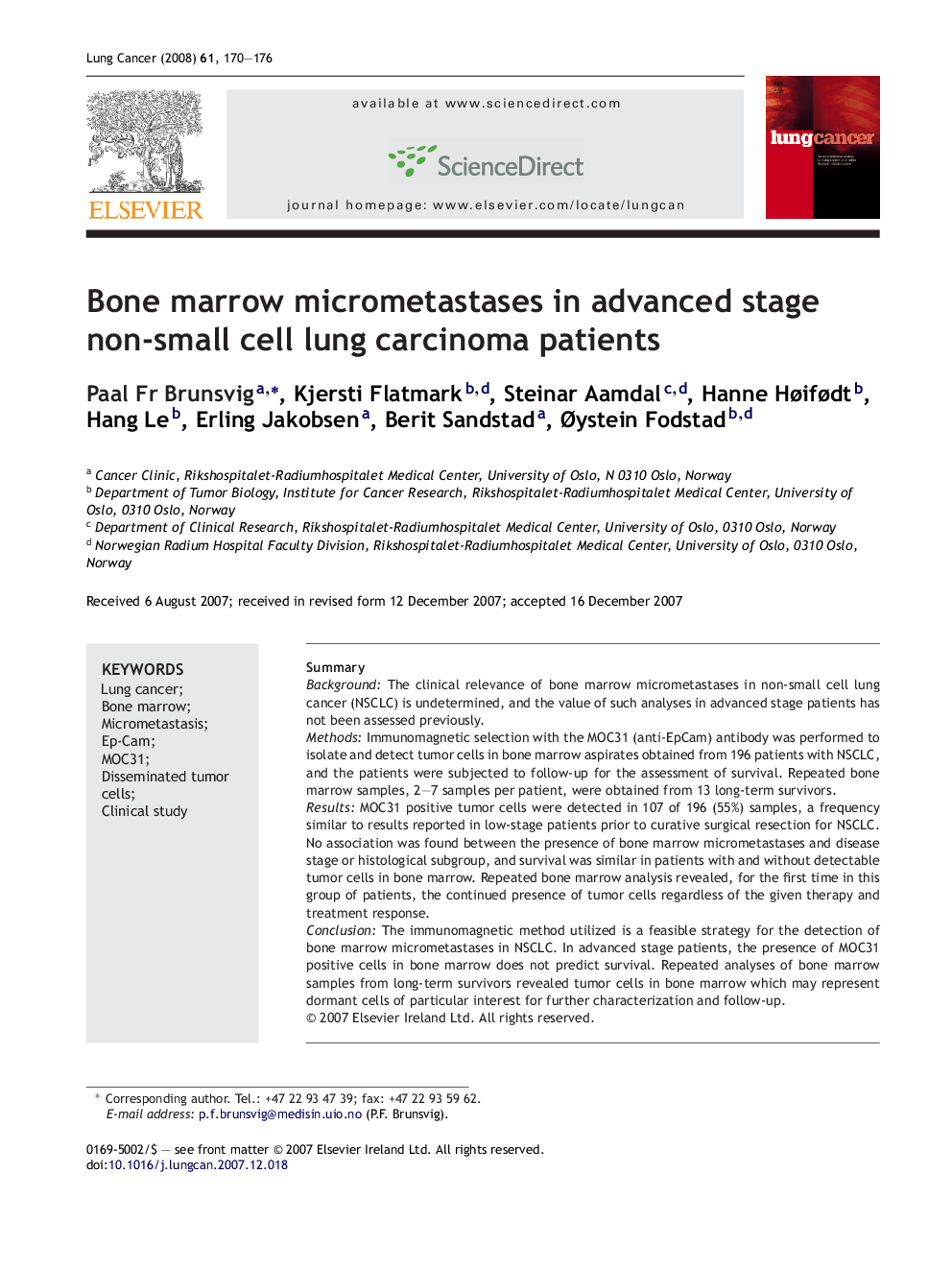| Article ID | Journal | Published Year | Pages | File Type |
|---|---|---|---|---|
| 2143157 | Lung Cancer | 2008 | 7 Pages |
SummaryBackgroundThe clinical relevance of bone marrow micrometastases in non-small cell lung cancer (NSCLC) is undetermined, and the value of such analyses in advanced stage patients has not been assessed previously.MethodsImmunomagnetic selection with the MOC31 (anti-EpCam) antibody was performed to isolate and detect tumor cells in bone marrow aspirates obtained from 196 patients with NSCLC, and the patients were subjected to follow-up for the assessment of survival. Repeated bone marrow samples, 2–7 samples per patient, were obtained from 13 long-term survivors.ResultsMOC31 positive tumor cells were detected in 107 of 196 (55%) samples, a frequency similar to results reported in low-stage patients prior to curative surgical resection for NSCLC. No association was found between the presence of bone marrow micrometastases and disease stage or histological subgroup, and survival was similar in patients with and without detectable tumor cells in bone marrow. Repeated bone marrow analysis revealed, for the first time in this group of patients, the continued presence of tumor cells regardless of the given therapy and treatment response.ConclusionThe immunomagnetic method utilized is a feasible strategy for the detection of bone marrow micrometastases in NSCLC. In advanced stage patients, the presence of MOC31 positive cells in bone marrow does not predict survival. Repeated analyses of bone marrow samples from long-term survivors revealed tumor cells in bone marrow which may represent dormant cells of particular interest for further characterization and follow-up.
